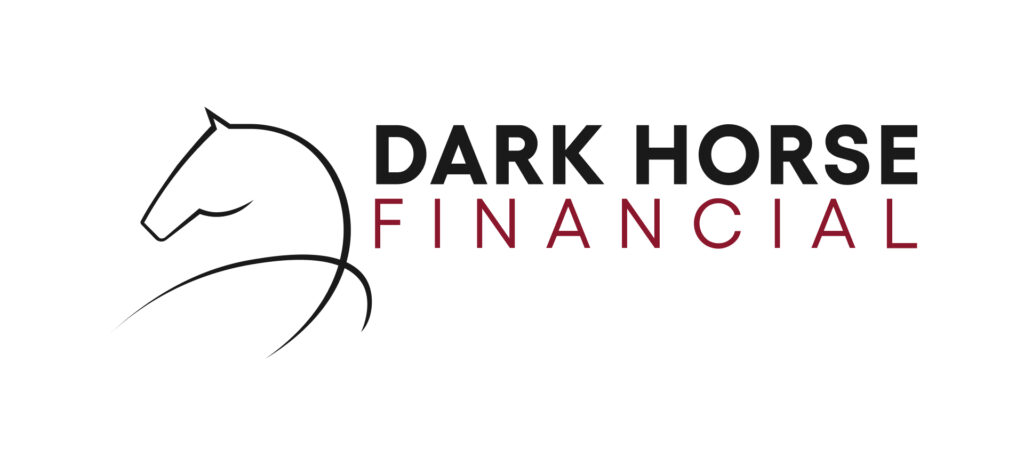Key Takeaways
- When applying for financing, developers can choose from different types of property development financing depending on their goals and borrowing needs.
- Traditional loans are ideal for purchasing existing land. These loans are usually structured as interest-only and have a maximum LVR of 65%-80%.
- Construction loans are designed for building properties, providing staged disbursements and capitalised interest during construction.
- Bridging loans refer to short-term finance to "bridge" the gap between buying a new property and selling an existing one, offering quick access to funds.
- Residual stock finance helps manage unsold properties after project completion, providing cash flow flexibility.
- Developers can access financing either through traditional lenders (banks) or non-traditional or private lenders.
- Choose the right type of finance based on your project’s stage, scope, and timeline to ensure alignment with your goals. To help you choose the right type, you can consult our team of experts.
- A strong application with detailed project plans, feasibility studies, and evidence of experience increases your chances of securing finance.
- Partner with lending experts like Dark Horse Financial. We’re experienced in property development finance, and we’ll help you access tailored solutions and competitive terms.
Going into property development requires a lot of financial resources. Whether you’re a experienced developer or a newcomer to the field, you’ll need financing to start and complete your project. In Australia, you can secure different types of property development finance based on your needs. Understanding the different types is key to selecting the right fit for your projects. For instance, if you need to buy land or existing structures, you’ll need a different type of financing than if you’re seeking to construct a new building.
Let’s talk about the different types of property development finance, including the most common ones— traditional loans, construction loans, bridging loans, and residual stock finance.
What is Property Development Finance?
Property development financing in Melbourne refers to the various funding options available to developers to acquire, construct, and complete properties in Melbourne and is relevant to other parts of Australia as well. It is a specialised form of financing tailored to the unique needs of property development projects, which often involve significant upfront costs, complex timelines, and varying levels of risk. Unlike traditional home loans, which are for the purchase of residential properties, property development finance is designed to support the entire lifecycle of a development project, from land acquisition and construction to the eventual sale or leasing of the completed property.
This type of financing is essential for developers who may not have the capital to fund large-scale projects independently. It provides the necessary liquidity to cover costs such as purchasing land, obtaining permits, hiring contractors, and managing construction phases. Property development finance can be structured in different ways, depending on the stage of the project, the developer’s financial position, and the level of risk involved.
Types of Property Development Finance
Let’s discuss the most common types of property development finance:
1. Traditional Loans
Traditional term loans are typically used to purchase existing land that is ready for immediate development. Developers usually turn to traditional loans while waiting for Development Approval. Traditional loans can be provided by banks and other non-bank lenders and are secured against the property or land being purchased.
Key Features of Traditional Loans
- Loan-to-Value Ratio (LVR): Traditional loans usually offer an LVR of up to 65-80%, meaning you’ll need to provide a 20-35% deposit or additional equity contribution.
- Structure: Traditional property development loans are usually structured as interest-only loans.
Advantages of Traditional Loans
- Simplicity: Traditional loans are straightforward and easy to understand, making them an attractive option for developers.
- Accessibility: Traditional loans can be used by developers while waiting for Development Approval, allowing them to access land and properties immediately.

2. Construction Loans
The most common property development loans type is the construction loan. Construction loans are specifically designed to finance the construction of new properties or the significant renovation of existing structures. These loans are typically short-term and are disbursed in stages as the construction progresses. Interest is capitalised onto the principal amount, to be paid off in full once the construction is complete.
Key Features of Construction Loans
- Drawdown Schedule: Construction loans are disbursed in stages, known as drawdowns, which correspond to different phases of the construction process.
- Loan Term: Property development construction loans usually have a term of 6 months to 2 years, depending on the complexity and size of the project.
- Exiting the Loan: Once the construction is completed, the developer must settle the loan in full.
Advantages of Construction Loans
- Flexibility: Construction loans offer flexibility in terms of the amount borrowed, which can be adjusted based on the progress and needs of the project.
- Short-Term Commitment: The short-term nature of construction loans means you’re not locked into a long-term financial commitment, giving you the flexibility to refinance or sell the property once the construction is complete.
3. Bridging Loans
Bridging loans are short-term financing options designed to “bridge” the gap between the purchase of a new property and the sale of an existing one. These loans are particularly useful for developers who need immediate funds to secure a new property before selling their current one.
Key Features of Bridging Loans
- Short-Term: Bridging loans are typically short-term, with loan terms ranging from 3 to 12 months.
- Interest-Only Payments: Borrowers usually make interest-only payments during the loan term, with the principal repaid in full at the end of the term.
- Interest Rates: Interest rates on bridging loans are generally higher than traditional loans due to the short-term nature and increased risk.
Advantages of Bridging Loans
- Quick Access to Funds: Bridging loans provide quick access to funds, allowing you to secure a new property without waiting for the sale of your existing one.
- Flexibility: Bridging loans offer flexibility in terms of repayment, with the option to repay the loan in full once the existing property is sold.
- No Need for Immediate Sale: You don’t need to have a buyer lined up for your existing property to secure a bridging loan, giving you more time to find the right buyer.

4. Residual Stock Finance
Residual stock finance is a type of loan designed to help developers manage the costs associated with unsold properties. This type of financing is particularly useful for developers who have completed a project but still have unsold units or properties.
Key Features of Residual Stock Finance
- Loan-to-Value Ratio (LVR): Residual stock finance typically offers an LVR of up to 50-70%, depending on the lender and the specifics of the project.
- Interest Rates: Interest rates on residual stock finance can be higher than traditional loans.
- Loan Term: The loan term for residual stock finance usually ranges from 6 to 18 months, depending on the lender and the specifics of the project.
Advantages of Residual Stock Finance
- Cash Flow Management: Residual stock finance helps manage cash flow by providing funds to cover the costs of unsold properties, allowing you to focus on marketing and sales efforts.
- Flexibility: Residual stock finance offers flexibility in terms of the amount borrowed, which can be adjusted based on the number of unsold properties.
- Short-Term Commitment: The short-term nature of residual stock finance means you’re not locked into a long-term financial commitment, giving you the flexibility to repay the loan once the properties are sold.
Banks vs. Non-Bank Lending Options
When it comes to securing property development finance, developers have two primary options: traditional banks and private lenders. Each has its own advantages, disadvantages, and lending criteria:
Banks: Traditional but with Strict Criteria
Banks are a common source of property development finance, offering competitive interest rates. However, their lending criteria are often strict, making it challenging for some developers to qualify.
- Eligibility Criteria: Banks typically require a strong credit history, a proven track record in property development, and a low-risk project. New developers or those with less experience may struggle to meet these requirements.
- Loan Approval Process: The approval process can be lengthy, often taking several weeks or even months, as banks conduct thorough due diligence on the project and the borrower.
- Project Size: Banks tend to favour larger, well-established projects with predictable outcomes. Smaller or higher-risk developments may not meet their lending criteria.
Private Lenders: Flexible and Fast
Private lenders, on the other hand, offer a more flexible and accessible alternative to traditional bank financing. They are often willing to fund a wider range of projects, including those that banks may consider too risky or unconventional.
- Eligibility Criteria: Private lenders are generally open to taking on more risk than banks if they can see a sound exit strategy. This makes them an excellent option for new developers.
- Loan Approval Process: Private lenders can provide financing much faster than banks, sometimes as fast as 10-14 days. This speed is particularly beneficial for developers who need to act quickly to secure a property or start construction.
- Project Size: Private lenders are willing to fund both smaller and larger projects, making them a versatile option for developers of all scales. They are also more open to financing unique or higher-risk developments.
- Customisation: One of the key advantages of private lenders is their ability to offer customised loan terms. This includes tailored repayment schedules, interest-only options, and flexible loan structures designed to meet the specific needs of the project.
When to Choose Banks vs. Private Lenders
Choose Banks if you have a strong track record and a large, low-risk project..
Choose Private Lenders if you need faster funding, have a smaller or higher-risk project, or are a new developer. Private lenders offer flexibility, speed, and accessibility, making them a great option for unconventional or time-sensitive projects.

Securing the Right Property Development Loans Type
Here are some practical tips to help you secure the most suitable property development finance:
- Assess the Scope: Clearly define the scope of your project, including the type of development (residential, commercial, or industrial), the size, and the timeline. This will help you determine which type of finance is most appropriate.
- Budget Accurately: Create a detailed budget that includes all costs, such as land acquisition, construction, permits, and contingency funds. Lenders will want to see a well-planned budget to assess the feasibility of your project.
- Consider Short-Term vs. Long-Term Needs: If you need funds quickly, bridging loans or construction loans may be more suitable. For longer-term projects, traditional loans or residual stock finance might be a better fit.
- Seek Out Development Finance Experts: We at Dark Horse Financial are experts in property development finance, working with projects of all sizes. Partnering with us means you’ll be matched with the right lender, with competitive rates and customised terms that fit your needs. We’ll make the process easy for you—fill up our form today.
Closing Thoughts
Securing property development finance is essential for any developer looking to succeed. To do that, it’s important to know and understand the different types available in Australia.
Traditional loans offer a way to purchase land and existing structures. Meanwhile, construction loans provide flexibility and staged disbursements. Bridging loans offer quick access to funds and flexibility for short-term needs. Finally, residual stock finance helps manage cash flow for unsold properties in completed projects.
Each type of financing has its own set of advantages and disadvantages, and the best option for your project will depend on your specific needs, financial situation, and the nature of the development.
Get The Right Property Development Financing Today
At Dark Horse Financial, we’re experts in helping developers secure the financing they need. We’ll help you choose the right financing option for you, offering the best rates and terms possible. Contact us today to learn more about how we can help.





